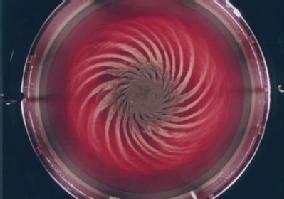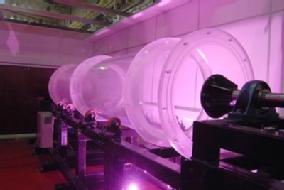Rotating, Geophysical and Particle-Laden Flow Laboratory
Rotating flows and particle-laden flows are ubiquitous in engineering and science. Their characteristics can differ fundamentally from those of the non-rotating or homogeneous counterparts. Our vertical rotating-tank and horizontal rotating-drum facilities to investigate these flows are the worlds’ largest and most sophisticated facilities of their type.
Background system rotation bears relevance to flows in rotating machinery. The rotation of the Earth can affect oceanographic currents and these are, in turn, closely related to important environmental issues such as the distribution of pollutants in the oceans.
Particle-laden flows are encountered frequently in the food and pharmaceutical industries. These flows are prone to segregation and clustering of the particulate phase. This is usually detrimental to product quality. We investigate the underlying physics of segregation and clustering with the goal to develop new processing techniques that eliminate requirements for inefficient mixing.
We study boundary-layer flow over rotating disks since this flow shares many characteristics with that over highly swept wings of aeroplanes. We further maintain a long-standing programme on the dynamics of vortices since these represent the ‘sinews and muscles of fluid motion’ governing complex flow phenomena such as turbulence.
 |
 |
 |
 |
